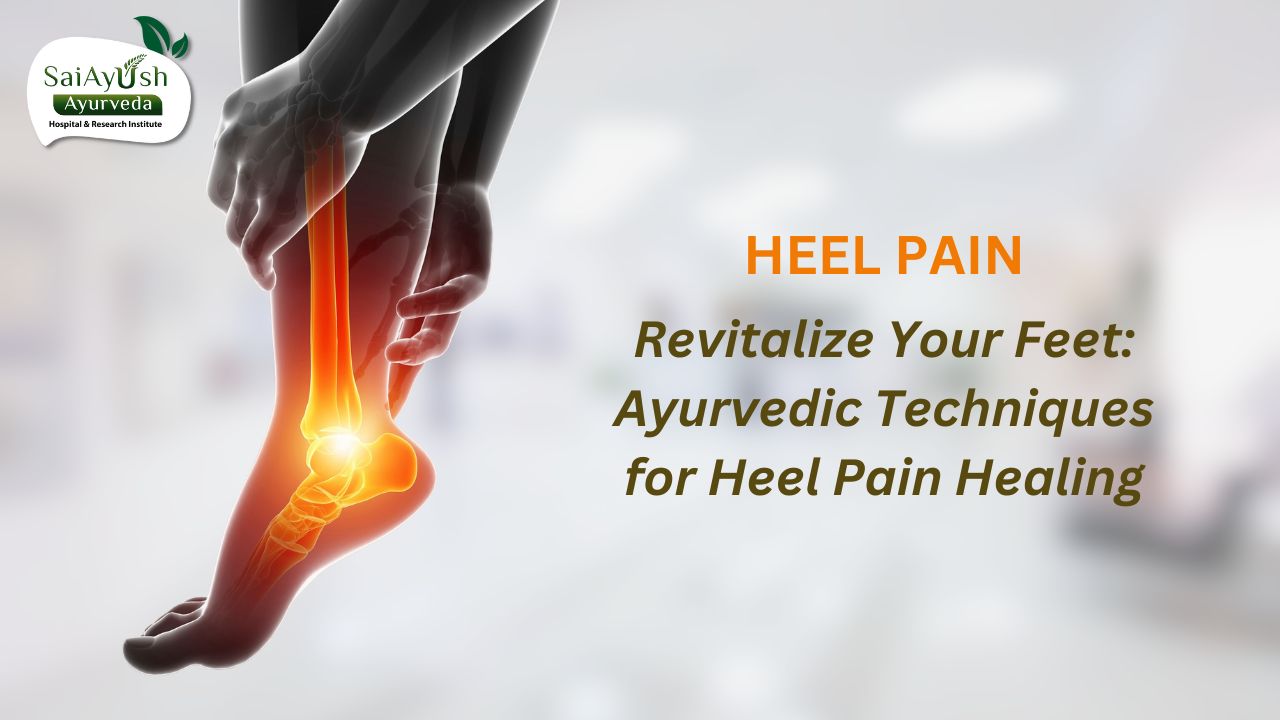Introduction
As someone who has experienced heel pain myself, I understand how debilitating it can be. In this blog post, I want to share my journey of finding relief from heel joint pain through Ayurveda. Together, we will explore the causes, risk factors, signs and symptoms, and the Ayurvedic approach to managing and treating heel pain. So, let’s dive in!
Understanding Heel Pain
Heel pain refers to discomfort or pain experienced in the heel area of the foot. People of all ages and levels of activity may be afflicted by this common foot condition. Heel pain can come in different degrees of intensity and may go along with redness, stiffness, or swelling. One of the conditions is plantar fasciitis, which occurs when the thick band of tissue (plantar fascia) connecting the heel bone to the toes becomes inflamed or irritated. This can result in sharp, stabbing pain in the heel area, especially after prolonged periods of rest or physical activity.
Causative Factors of Heel Pain
Several factors contribute to the development of heel pain. Common causes of heel pain include plantar fasciitis, Achilles tendonitis, heel spurs, and bursitis. Some of the common causes include:
- Overuse or repetitive strain on the feet
- Obesity or excessive weight
- Poor footwear choices
- Flat feet or high arches
- Tight calf muscles or Achilles tendon
- Certain medical conditions like arthritis or diabetes
Identifying the Signs and Symptoms
Recognizing the signs and symptoms of heel pain is crucial for early intervention and effective treatment. Look out for the following indications:
- Pain and tenderness in the bottom of the heel
- Increased discomfort after long periods of standing or walking
- In the impacted foot, stiffness and restricted motion
- Sharp pain with the first steps in the morning or after rest
- Swelling or redness around the heel area
Ayurvedic approach to Heel Pain
Heel pain, according to Ayurveda, is primarily brought on by an imbalance in the Vata dosha, which controls flexibility and movement. When Vata becomes aggravated, it can lead to inflammation and pain in the heel joint. Ayurveda focuses on restoring balance within the body through a combination of dietary and lifestyle modifications, herbal remedies, and specific treatments.
Internal and External Medication for Heel Pain
Ayurveda offers a holistic approach to healing heel pain, addressing both the internal and external aspects.
Internal medication may include:
- Triphala churna: A herbal powder that helps reduce inflammation and promotes digestion.
- Guggulu: An herbal supplement known for its anti-inflammatory properties.
- Shallaki: It may help reduce inflammation and alleviate heel pain.
External medication involves:
- Massage with warm herbal oils like Mahanarayan oil or Bala oil to improve blood circulation and reduce pain.
- Application of herbal pastes such as Dashanga lepa or Kottamchukkadi lepa to reduce inflammation and swelling.
Some of the panchakarma therapies are:
- Abhyanga: This is a full-body oil massage using warm herbal oils. It helps improve circulation, relaxes muscles, and reduces pain.
- Bashpa Sweda: This involves localized steam therapy, which can help reduce pain and inflammation in the affected area.
- Patra Pinda Sweda: This treatment involves massaging the affected area with a warm bundle of herbal leaves dipped in medicated oil. It helps relieve pain and inflammation.
Managing Heel Pain with Ayurveda:
In addition to medication, Ayurveda emphasizes the importance of lifestyle modifications to manage heel pain effectively. Here are some tips to consider:
- Maintain a healthy weight to reduce excess pressure on the feet.
- Make sure your shoes have the right amount of cushioning and arch support.
- Practice regular stretching exercises to keep the calf muscles and Achilles tendon flexible.
- Avoid standing or walking for prolonged periods.
- Follow a Vata-pacifying diet, including warm, nourishing foods and herbal teas.
Note: Always seek treatment and medication after consulting a skilled Ayurvedic physician
Conclusion
Heel pain can significantly impact our daily lives, but with the holistic approach of Ayurveda, relief is within reach. By understanding the causes, recognizing the signs and symptoms, and adopting Ayurvedic principles, we can effectively manage and treat heel pain. Remember to consult a qualified Ayurvedic practitioner to personalize your treatment plan. Embrace the healing power of Ayurveda and take the first step towards pain-free heels!



0 Comments